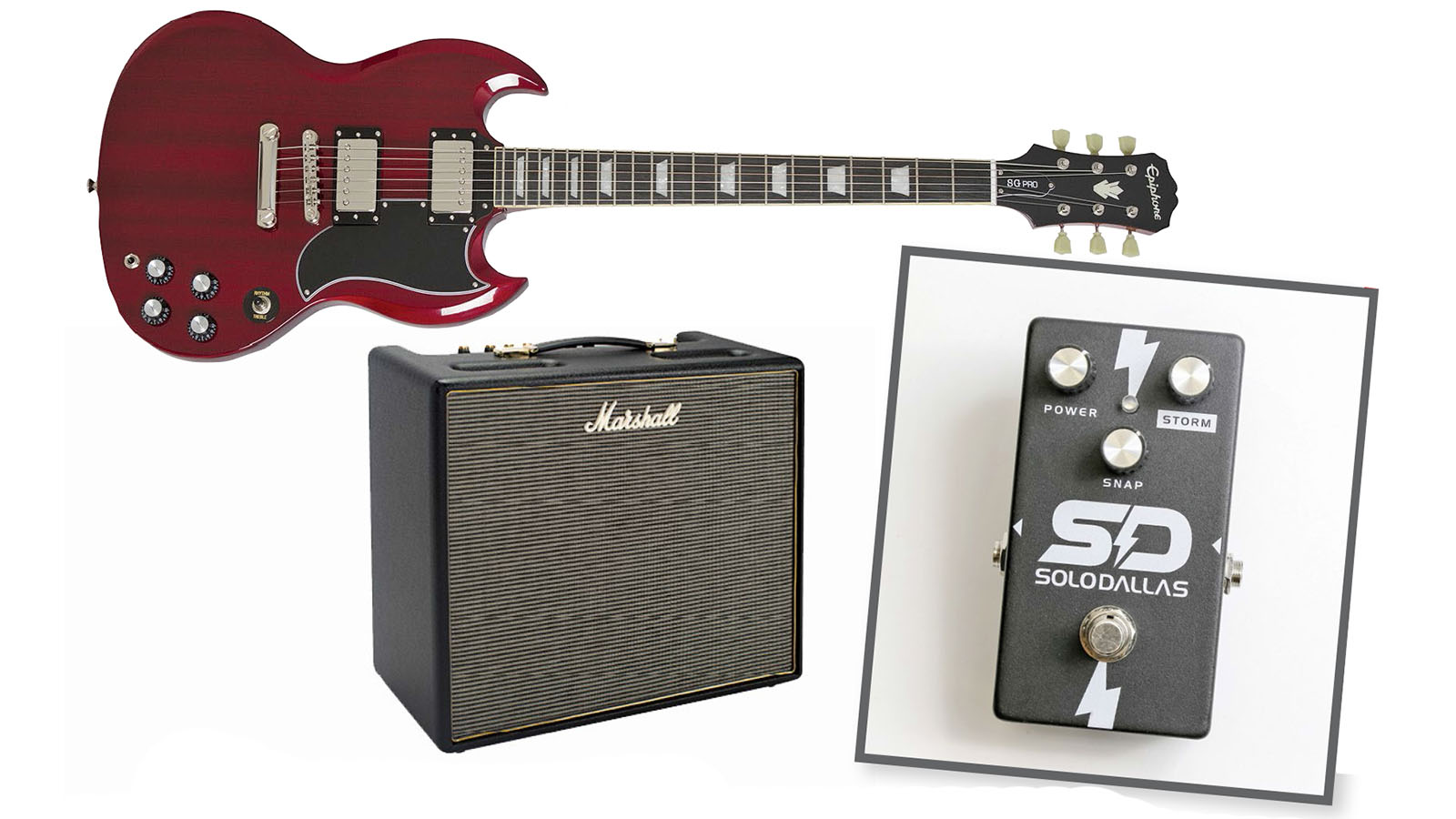The Secrets Behind Angus Young's Guitar Tone on AC/DC's "Hells Bells"
There’s much more to Angus Young's "Hell's Bells" tone than just his timeless Gibson SG Standard and Marshall amp rig.

It’s well-documented that Angus Young is a no-nonsense player who prefers the sound of just a guitar and amp with no other effects. But there’s much more to Angus’ tone than just his timeless Gibson SG Standard and Marshall amp rig. In the studio — particularly when recording AC/DC’s monumental Back in Black album — Young used a wide variety of different Marshall amp heads to narrow down the perfect individual guitar tones for each song. Some of his favorite recording amps for Back in Black included various plexi Super Lead 100-watt heads when he needed crisp treble and crunchy overdrive, various 50-watt Marshalls for solos and Marshall 2203 JMP 100-watt master volume heads for when he wanted darker tones with fatter midrange and more saturated distortion.
Unfortunately, Angus didn’t keep detailed records of what amps he used on which Back in Black songs, but his tone on “Hell's Bells” has the unmistakable midrange growl and thick saturated grit of a Marshall 2203. Angus recorded his primary rhythm track (panned hard right) using just his favorite 1970 Gibson SG Standard and a Marshall 2203 half stack (the amp can be heard bleeding into the mics used to record Malcolm’s amp, which is panned to the left channel), but when recording overdubs for his center channel rhythm guitar track and solo he also employed his favorite secret weapon — a Schaffer-Vega Diversity System wireless transmitter and receiver.
Angus used the Schaffer partly because it allowed him to play in the control room and hear his performance over the monitors. But more importantly, the Schaffer system’s circuitry provides more than 30dB of clean boost along with compression and expansion (a.k.a. com-panding) to deliver richer harmonic content, more dynamic touch sensitivity and fuller body while maintaining percussive attack and the raw metallic crunch of the strings. The Schaffer essentially took what was good about Angus’ Marshall tones and made them great, which explains why many guitarists who plug into SG and Marshall rigs in search of his sound fail to truly replicate his elusive magic.
GET THE SOUND, CHEAP!
● Epiphone G-400 Pro ● Marshall Origin 50C combo ● SoloDallas Storm pedal

TONE TIP: The SoloDallas Storm may be a little pricey but as it’s an exact replica of the Schaffer-Vega’s boost and companding circuitry, nothing gets you closer to Angus’ signature tones from AC/DC’s classic recordings.
ORIGINAL GEAR
Get The Pick Newsletter
All the latest guitar news, interviews, lessons, reviews, deals and more, direct to your inbox!
GUITAR: 1970 Gibson SG Standard with stock Gibson “T-Top” humbucking pickups (bridge pickup setting), Volume: 10, Tone: 10
AMP: Late-’70s Marshall 2203 JMP 100-watt head (Presence: 0, Bass: 5, Middle: 6, Treble: 5, Master Volume: 5, Preamp Volume: 6, High Sensitivity input), Marshall 4x12 cabinet loaded with Celes-tion G12M greenback speakers
EFFECTS: Schaffer-Vega Diversity Wireless
STRINGS/TUNING: Gibson Ultra Lights .009, .011, .016, .024, .032, .042/Standard
PICK: Fender Extra Heavy
Chris is the co-author of Eruption - Conversations with Eddie Van Halen. He is a 40-year music industry veteran who started at Boardwalk Entertainment (Joan Jett, Night Ranger) and Roland US before becoming a guitar journalist in 1991. He has interviewed more than 600 artists, written more than 1,400 product reviews and contributed to Jeff Beck’s Beck 01: Hot Rods and Rock & Roll and Eric Clapton’s Six String Stories.
“His songs are timeless, you can’t tell if they were written in the 1400s or now”: Michael Hurley, guitarist and singer/songwriter known as the ‘Godfather of freak folk,’ dies at 83
“The future is pretty bright”: Norman's Rare Guitars has unearthed another future blues great – and the 15-year-old guitar star has already jammed with Michael Lemmo











